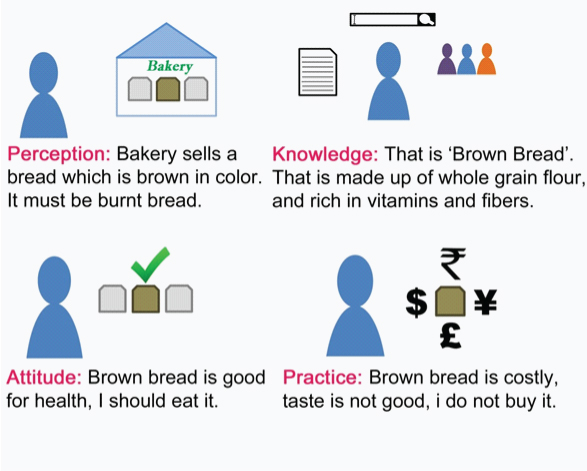Correspondence: Knowledge Attitude and Perception of Sex Education among School Going Adolescents in Ambala District, Haryana, India: A Cross-Sectional Study
Himel Mondal1, Shaikat Mondal2
1 Postgraduate Student, Department of Physiology, Maharaja Krishna Chandra Gajapati Medical College, Ganjam, Odisha, India.
2 Postgraduate Student, Department of Physiology, Medical College and Hospital, Kolkata, West Bengal, India.
NAME, ADDRESS, E-MAIL ID OF THE CORRESPONDING AUTHOR: Dr. Himel Mondal, Postgraduate Student, Department of Physiology, MKCG Medical College, Ganjam-760004, Odisha, India.
E-mail: himelmkcg@gmail.com
Dear Editor,
In community medicine section of your journal, Kumar R et al., aimed their study at identifying level of perception, knowledge, and attitude in school going adolescents towards sex education [1]. However, in the discussion section of the study, authors mentioned that they tried to assess the Knowledge, Attitude and Practices (KAP) and perception regarding reproductive and sexual health among adolescents. It is obscure that how authors assessed the level of ‘practice’ of the adolescents regarding the reproductive and sexual health. From the design and result of the study, it is evident that it might be a study to assess the perception, knowledge and attitude only, not the practice.
A KAP survey is a survey conducted on a specific population to gather information on what they know, believe and do in relation to a specific issue [2]. Perception and Practice are two different terms and it should not be confused with each other. Study by Kharkar M and Bowalekar S also used the terms ‘perception’ and ‘practice’ with an ‘or’ conjunction [3]. This may confuse readers and may also contribute to build misconception about these two words.
For better understanding of these terms, we have presented a simple example in [Table/Fig-1]. Perception is the way we think about or understand something. In the given example in [Table/Fig-1], a person saw some bread in a bakery and noticed one type of bread which is brown in colour. The person thought that it must be burnt. That was the ‘perception’. Then the person discussed the matter with friends, searched internet, and read books or magazine and collected more information about the bread to build the ‘knowledge’. Then, the person had knowledge that it is a ‘Brown Bread’, made up of whole grain flour, and it is rich in fibers. Then a positive ‘attitude’ developed about the brown bread that it is good for health and the person decided to consume it. However, when the person bought the brown bread, it was noticed that the price is higher than other bread and the taste was not pleasant. Hence, the person decided not to buy it again. That was the ‘practice’.
Perception, Knowledge, Attitude and Practice for an issue concerned with brown bread.

Topic of sex education is a sensitive issue for Indian culture. In the study, investigators collected data by interview. The instrument was a self-report questionnaire. Hence, it can be assumed that the self-report questionnaire was filled with the help of investigator during face to face interview. Investigators found that adolescents feel shy to talk about sex education. Furthermore, some adolescents, especially girls hesitate to reply about sex education. It is well documented that presence of interviewer can distract the respondents [4]. This obstacle in the study could be decreased if authors decided to use a ‘self-administered’ questionnaire instead of ‘self-report’ questionnaire in interview after the experience from the pilot study or pre-test session. Self-administered questionnaire has no interviewer control and respondents can preview the questions alone and record their response [5]. Hence, self-administered questionnaire may be considered better instrument for studies where respondents may feel shy to record their response in front of interviewer.
Editorial Note
The point raised by the author is an important aspect which a researcher should bear in mind. The distinction between ‘practice’ and ‘perception’ in KAP studies is very fine, yet important. However, in the article [1] the essence of the study is based on ‘knowledge’, ‘attitude’ and ‘perception’. This has been clearly stated in the article many times.
The word ‘practice’ appeared in the Discussion section, which we believe was an error from the editorial as well as the author’s end.
Nevertheless, the letter is worth publishing as the content is valuable and the authors put forward an important aspect of KAP studies. We appreciate them for their efforts and thank them for the critical appraisal.
[1]. Kumar R, Goyal A, Singh P, Bhardwaj A, Mittal A, Yadav SS, Knowledge attitude and perception of sex education among school going adolescents in Ambala District, Haryana, India: a cross-sectional study J Clin Diagn Res 2017 11:LC01-LC04. [Google Scholar]
[2]. The KAP Survey Model (Knowledge, Attitudes, and Practices). Available from: https://www.spring-nutrition.org/publications/tool-summaries/kap-survey-model-knowledge-attitudes-and-practices [Last accessed on 2017 Feb 05] [Google Scholar]
[3]. Kharkar M, Bowalekar S, Knowledge, attitude and perception/practices (KAP) of medical practitioners in India towards adverse drug reaction (ADR) reporting Perspect Clin Res 2012 3(3):90-94. [Google Scholar]
[4]. Bowling A, Mode of questionnaire administration can have serious effects on data quality J Public Health (Oxf) 2005 27(3):281-91. [Google Scholar]
[5]. Burns KEA, Duffett M, Kho ME, Meade MO, Adhikari NKJ, Sinuff T, A guide for the design and conduct of self-administered surveys of clinicians CMAJ 2008 179(3):245-52. [Google Scholar]